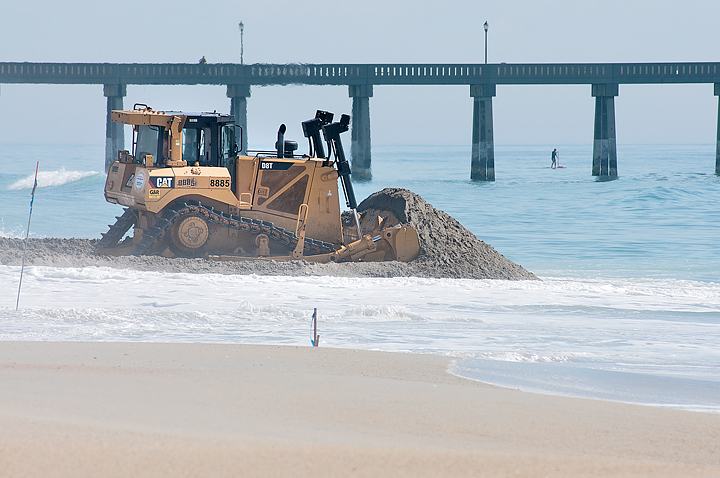In a decision that could have an impact on Wrightsville Beach’s periodic beach renourishment efforts, the U.S. Interior Department reversed a 2016 decision that could impact the cost of restoring sand to North Carolina beaches.
U.S. Interior Secretary David Bernhardt reversed a 2016 U.S. Fish and Wildlife Service interpretation that would have significantly increased the cost of beach renourishment projects for certain towns for beach renourishment, an expensive construction project to restore sand to beaches that proponents say help protect property from flood and storm damage.
In an objection by Fish and Wildlife dating back to 2016, an interpretation of the 1982 Coastal Barrier Resources Act (CBRA) would have prohibited any beach from utilizing sand from a CBRA zone. The ruling would have potentially prohibited Wrightsville Beach, Kure Beach and Carolina Beach from using sand from inlet borrowing sites for coastal storm damage reduction projects. The agency’s objection would have forced the towns to seek other sand from further away offshore, escalating the cost of these projects, according to U.S. Rep. David Rouzer, R-N.C., 7th District.
Beach renourishment projects receive significant federal funding, with the 2018 Wrightsville Beach renourishment project totalling more than $9 million in costs. The project used sand collected from Masonboro Inlet.
“This reversal in opinion is a return to common sense,” Rouzer said. “The 2016 objection to the use of these towns’ traditional sand borrow sites is the kind of bureaucratic red tape that costs taxpayer dollars with no benefit. I’m pleased we were able to work on a bipartisan basis to urge the Department to reverse this directive. This is a major win for taxpayers and our beaches.”
In a bipartisan letter sent last month,Rouzer and two of his colleagues wrote Sec. Bernhardt to urge the Department to revise the Fish and Wildlife Service’s objection.
“We write to you about an interpretation of the [CBRA] that could jeopardize public and private infrastructure, small businesses and regional economies,” the lawmakers wrote. “In our congressional districts, coastal storm damage reduction projects carried out by the U.S. Army Corps of Engineers in partnership with our respective states have been stalled, and their costs have ballooned, because of a 2016 interpretation…that essentially states that sand from System units cannot be placed on a non-CBRA shoreline. This decision suddenly prohibited sand recycling from certain System units – despite the Service in 1996 having previously allowed san recycling from these same System units per CBRA’s exceptions.”




